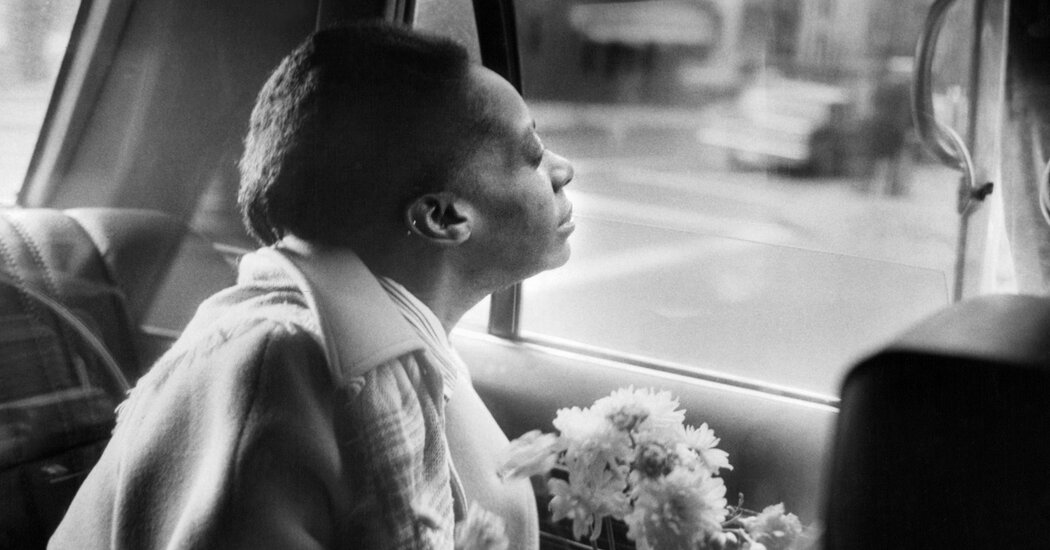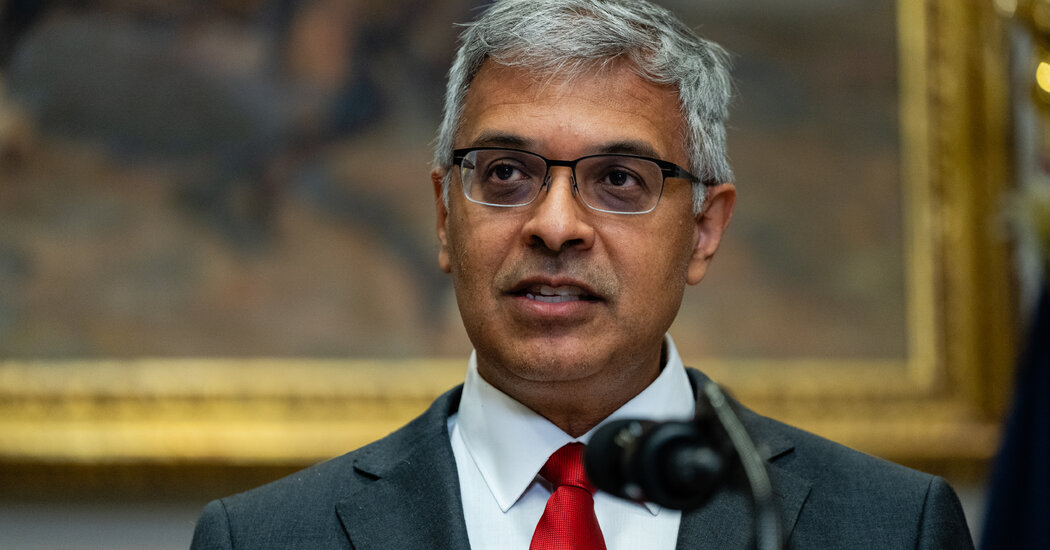This article is part of Overlooked, a series of obituaries about remarkable people whose deaths, beginning in 1851, went unreported in The Times.
Joyce Brown’s New York minute lasted longer than most. A onetime secretary, Brown became homeless in 1986 and began camping on a heating grate on Second Avenue and 65th Street in Manhattan.
A year or so passed before she was picked up by city officials, involuntarily committed to a psychiatric hospital — where she was declared mentally ill — and forcibly given medication. Brown, who was better known as Billie Boggs, was the first homeless person to become the focus of Mayor Edward I. Koch’s newly expanded initiative to address the increasing visibility of homelessness and untreated mental illness on the streets.
But, as she would later say in interviews, the city chose “the wrong one.” Unlike the dozen or so other people who would face similar fates, she said she knew her rights, and she would begin exercising them the very next day.
What followed was a landmark lawsuit centered on mental health, civil liberties and the involuntary psychiatric treatment of homeless people. “I’m not insane,” Brown would say. “Just homeless.”
Before long, Brown was lofted from the pavement to prominence, with a whirlwind of interviews on talk and news programs.
By the time Brown died of a heart attack on Nov. 29, 2005, at 58, she had long been forgotten.
But the repercussions of her transitory fame still echo on the city’s sidewalks and subways, as Gov. Kathy Hochul and Mayor Eric Adams have introduced their own initiatives to address homelessness in New York, including involuntarily hospitalizing people in psychiatric crisis.
Joyce Patricia Brown was born on Sept. 7, 1947, in Elizabeth, N.J., the youngest of six children, most of whom had been born in South Carolina and Florida.
Her father, William Brown, told census enumerators in 1950 that he was unemployed. Her mother, Mae Blossom Brown, worked in a factory assembling luggage.
Some time after graduating from high school, Joyce Brown worked as a secretary for the Elizabeth Human Rights Commission, where she may have learned a thing or two about her own constitutional privileges. She also worked as a clerk for Elizabeth’s mayor at the time, Thomas G. Dunn, and for Thomas & Betts, an electrical equipment manufacturer, according to a death notice from Nesbitt Funeral Home in Elizabeth.
By 18, though, she was addicted to cocaine and heroin and was stealing money from her mother. Her mother died in 1979, which, her relatives said, might have sparked a further downward spiral emotionally.
By 1985, she had lost her job. She took turns living with her sisters in New Jersey and was treated briefly in clinics and hospitals. Her sisters’ efforts to help her resulted in arguments, and in 1986 she moved to Manhattan, where she made her home on the sidewalk near a Swensen’s ice cream parlor on the Upper East Side, urinating and defecating outdoors nearby.
She adopted the name Billie Boggs, a twisted homage to Bill Boggs, a television host on WNEW (now WNYW), with whom she had become enraptured.
To some neighbors and regular passers-by, she became a New York fixture, the kind you don’t find in the guidebooks; they would converse with her about the news. To others, she was a menace — cursing and shouting racial epithets, particularly at Black men, and even punching people.
Her sisters sought to have her hospitalized. But doctors said she did not present a danger to herself and released her.
On Oct. 12, 1987, after she had been monitored for months under a Koch administration strategy known as Project HELP (the initials stood for Homeless Emergency Liaison Project) — intended to remove severely mentally ill homeless people from Manhattan’s streets and forcibly provide them with medical and psychiatric care — she was taken to the emergency room at Bellevue Hospital, where she was admitted and injected with a tranquilizer and an anti-psychotic drug.
The next day, according to a 1988 article in New York magazine, she called the New York Civil Liberties Union from a pay phone at the hospital. Norman Siegel, the organization’s executive director, was one of the lawyers assigned to her case. In court, a Bellevue psychiatrist presented a diagnosis of “chronic paranoid schizophrenia.”
That night, one of her sisters recognized her from a courtroom sketch on the TV news.
That image was in stark juxtaposition to a photograph produced by her family, which showed a smiling Brown, wearing a red dress and gold earrings as she was being hugged by a man in a tuxedo with a pink bow tie, her sisters smiling into the camera nearby.
“This used to be my sister,” one of the sisters told Newsday. “This used to be us.”
A State Supreme Court judge ruled that Brown was “not unable to care for her essential needs” and ordered that she be released, but she remained at Bellevue while the city appealed the decision. The city won the appeal, but after a subsequent appeal by Brown’s lawyers, a judge’s ruled that she could not be forcibly medicated. That appeal was dropped when Bellevue released Brown, saying there was no point in her staying if she could not receive the hospital’s care. She had spent a total of 84 days there.
She soon evolved into a media star, a symbol of justice who, her lawyers said, presented herself in her lucid and articulate interviews a more or less rational example of urban bivouacking who was, she said, “under surveillance” for months “like I was a criminal.”
“In a civilized society you don’t just go around picking up people against their will and bringing them to the hospital when they’re sane just because of a mayor’s program,” she told Morley Safer for a 1988 segment of the CBS News program “60 Minutes.” “All of this is political. I am a political prisoner because of Mayor Koch.”
In the same segment, Mayor Koch insisted that defecating on the street was “bizarre” and said that Brown’s ability to speak articulately on camera demonstrated the efficacy of her hospitalization and the medication she had been given.
That year Brown also appeared on “The Phil Donahue Show,” after being outfitted from Bloomingdale’s, and delivered a lecture to a Harvard Law School forum in which she offered “a street view” of homelessness. Book and film offers flooded the offices of the New York Civil Liberties Union. The Associated Press called her “the most famous homeless person in America.” At his Moscow Summit with Mikhail S. Gorbachev, the Soviet leader, in 1988, President Ronald Reagan invoked her case as an example of freedom in contrast to Moscow’s policy of detaining political dissidents by claiming they were mentally ill.
“Rather than talking about me, why doesn’t the president assist me in getting permanent housing?” Brown was quoted as saying.
In the wake of Brown’s case, Project HELP faced public scrutiny and criticism. The program’s momentum stalled, and it was eventually discontinued. Brown’s lawsuit continues to serve as a precedent in debates over mental health, homelessness and civil liberties.
After Brown was released, she worked briefly as a secretary for the civil liberties union. But she quit because, she said, she didn’t like the job.
“The spunkiness that I had always admired dissipated,” Siegel said of her in an interview.
She put on weight; her gait slowed; she might have been medicated again for a while. Around 1991, she moved into a supervised group home for formerly homeless women, but she also returned to the streets to panhandle, saying that her sisters had delayed forwarding her more than $8,000 in Social Security checks. She continued to live on $500 a month in disability pay and avoided the press.
When Brown was initially released from Bellevue, it was against the recommendation of two dissenting State Supreme Court justices. “We may be approaching the time,” they wrote, “when the problem of the homeless will be confronted with sincere and realistic attitudes and resources.”
“Now,” Siegel said, “35 years later, the hopes of the dissenting justices have unfortunately still not materialized.”






